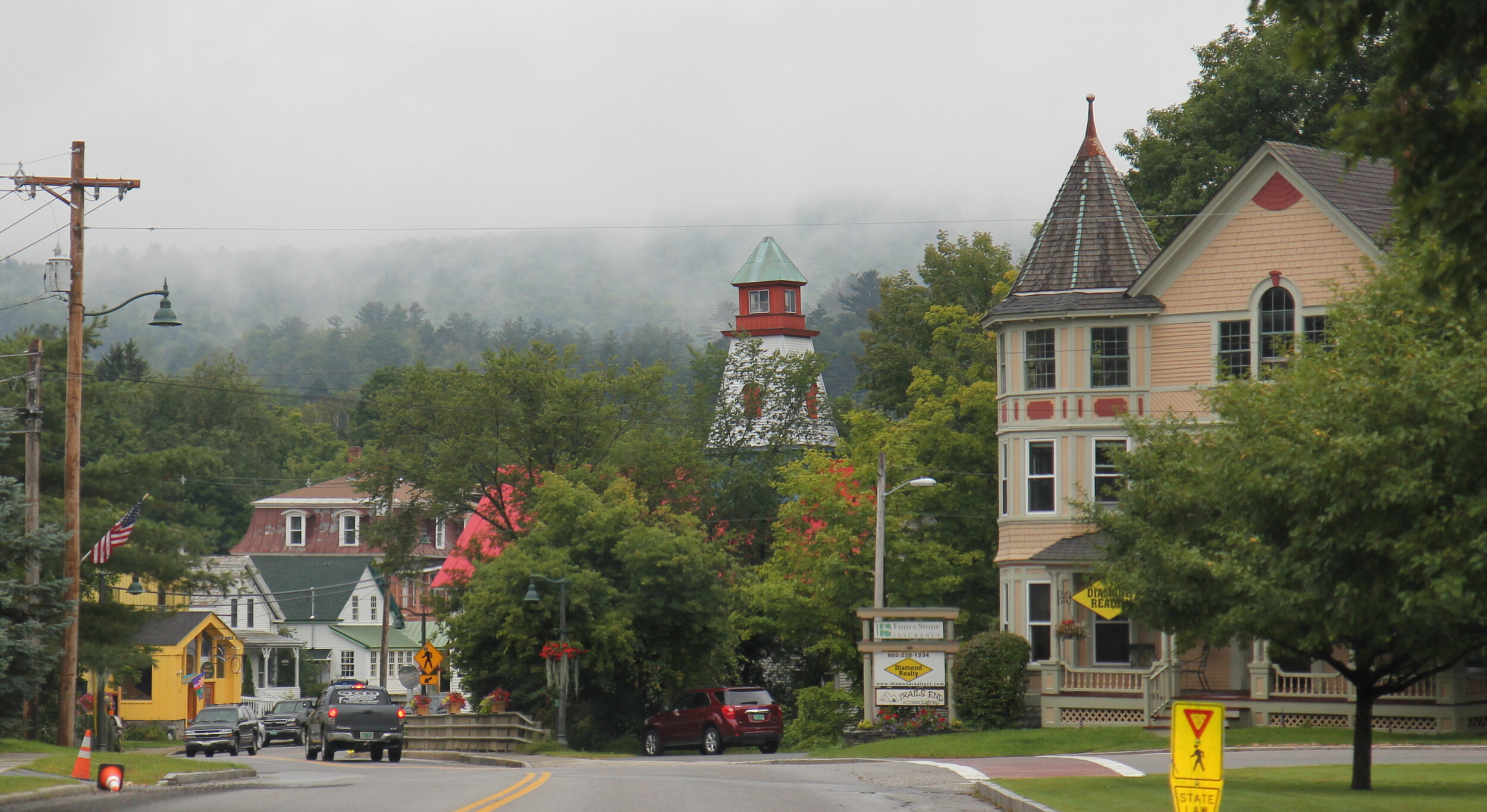In Vermont, One Step Closer to Finding “Missing Middle” Housing
Ludlow, Vermont. Image source.
Vermont has long been known as a state that values the environment. Heavily forested and agricultural in nature, Vermonters banned billboards and have stringent development regulations designed to assess and mitigate environmental impacts.
But as green as Vermonters have tried to be, there was one area where their ideals were undercut by their actions: land use. From Route Seven south of Rutland and Middlebury, to Burlington and its suburbs, and in some of the area around Barre and Montpelier—the big box store, subdivision and parking lot predominate.
But that could be about to change.
At the end of July, the Vermont State Senate unanimously passed a bill designed to encourage “missing middle” housing in the state’s cities and villages. According to Public Square, the bill “bans zoning laws that set minimum lots sizes greater than an eighth of an acre (5,400 square feet) where water and sewer service is available,” and it allows duplexes and accessory dwelling units (ADUs) to be built as of right. Minimum parking requirements would also be reduced.
Under the bill, municipalities can no longer completely prohibit multifamily development. It states that “Within any regulatory district that allows multi-unit residential dwellings, no bylaw shall have the effect of prohibiting multi-unit residential dwellings of four or fewer units as an allowed, permitted use, or of conditioning approval based on the character of the area.” Cities and towns also can’t prevent owner-occupiers from adding ADUs where only single-family homes are currently allowed. Essentially, any lot that had been zoned for a single-family home must now allow a duplex, and any lot zoned for duplexes must now permit fourplexes. Development can only be prohibited on water- and sewer-connected lots if they are smaller than one-eighth of an acre or less than 40 feet wide or deep.
This means that new housing in Vermont will be built in existing neighborhoods, using existing water and sewer lines, and existing roads. This will allow the population and densities of Vermont’s cities and villages to increase without developers building a subdivision’s worth of new infrastructure for the town to later assume control of and be bankrupted by.
The bill also provides incentives—priority for state funding for water and sewer systems, municipal planning grants, community development grants, and historic tax credits—to cities and towns that commit to updating their zoning laws in accordance with the bill. Private landlords are also incentivized to renovate and improve their properties with matching grants.
Overall, it’s a very good bill. It supports building housing that leverages existing resources and infrastructure, rather than brand-new subdivisions on undeveloped land. Making ADUs legal by right and allowing duplexes to become fourplexes by right is also a huge step; it could be a model for other parts of the country, as the measures will allow housing to be built rapidly, but also incrementally. Property owners seeking to take advantage of the new provisions will likely find it easier to build additions to existing homes rather than build completely new buildings—especially in light of the renovation grants.
One-eighth of an acre—the size at which cities must now allow development (if connected to water and sewer)—may seem large, but even the most closely packed houses in the oldest parts of Rutland, Middlebury, Woodstock and Burlington are set on lots much larger than that minimum, so it looks to be well within a traditional Vermont development pattern. The forty-foot width also seems large, but is again within traditional Vermont development.
For parking, spaces that are leased separately from the residences and are within a half-mile of a transit stop will count as two toward meeting the parking minimum requirements. This should help promote walkability, but more could be done. Vermont’s villages and cities should be encouraged to expand sidewalks and build bike lane networks. They should also be encouraged to adopt form-based codes to keep homes fronting the street as much as possible. The bill also contains nothing about mixed-use development in downtowns or other non-residential zones—something that could be important, especially in Burlington.
According to Public Square, the bill emerged from a collaboration between the Congress for the New Urbanism’s Project for Code Reform and the Vermont Department of Housing and Community Development. Together they created a blueprint for zoning reform called Enabling Better Places: A Zoning Guide for Vermont Neighborhoods. That document was much more comprehensive and included the things not mentioned in the bill. Communities that sensibly decide to implement the bill will have a handy guide to reforming their zoning codes to promote development that adds to one of Vermont’s greatest resources: its human-scaled communities.
About the Author
Matthew M. Robare is a Boston-based freelance writer specializing in urbanism and transportation. Follow him on Twitter @MattRobare. His website is www.mattrobarewrites.com.






Outdated zoning laws are holding cities back, restricting housing options and stalling economic growth. That’s why Cincinnati is trying something different.